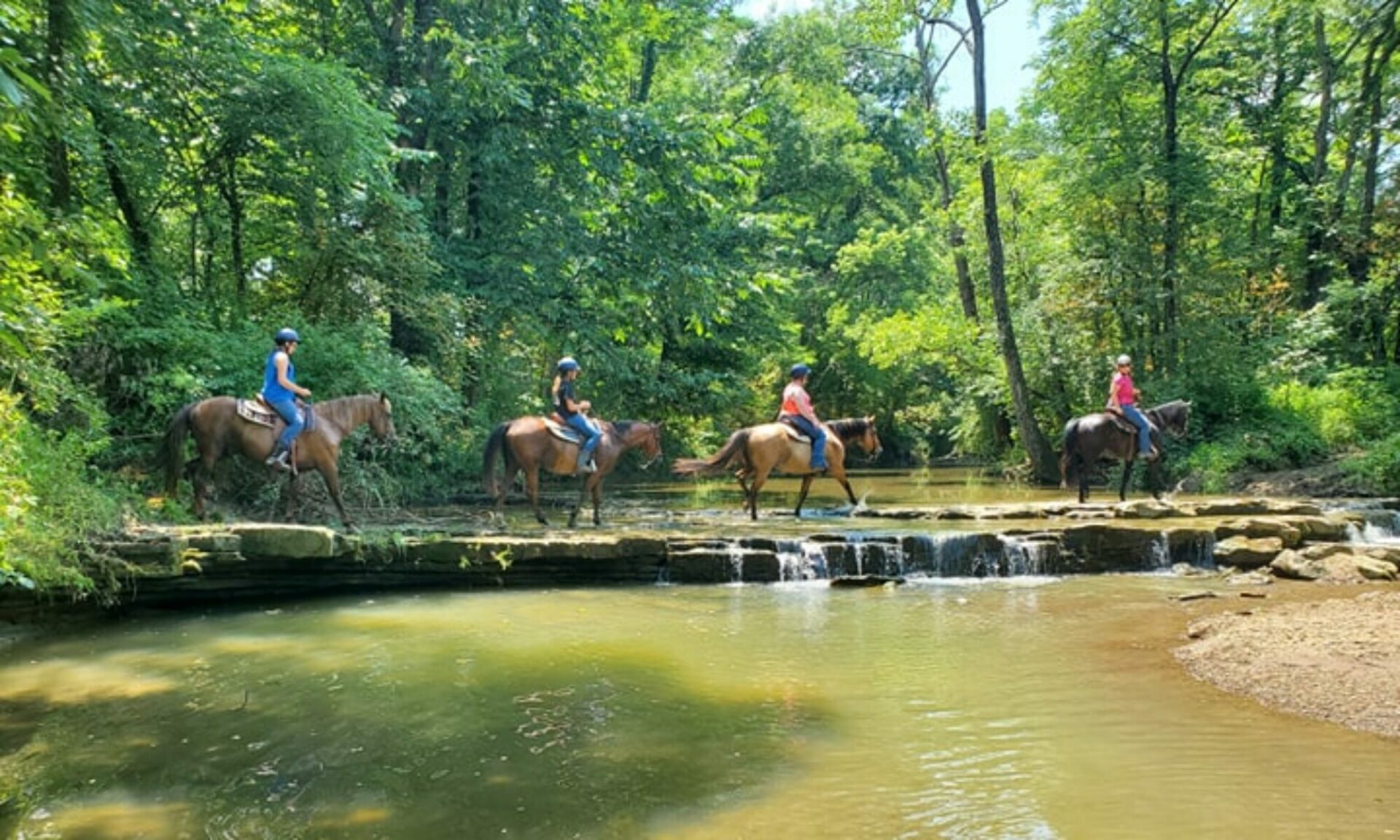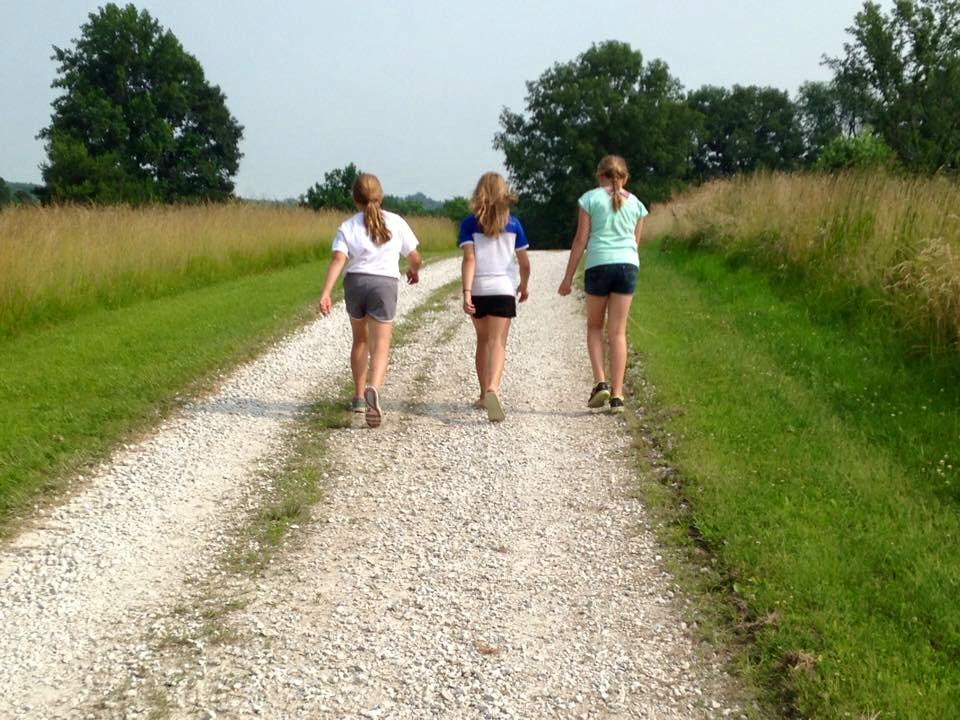The History of Jensen Woods Camp
(Information from IGRC website)
The original acres
Jensen Woods Camp had its origins in the heart of a Methodist man of faith who was deeply committed to camping as a vital means of making young disciples of Jesus Christ and to a daughter, Roselyn, who was informed in 1962 that she couldn’t go to church camp because they were all full.
Ernest Jensen responded to this disappointment by offering 40 acres of timber and rolling prairie to the Central Illinois Conference for a pioneer camp. Jack Muir, Owen Candler, Leroy Kotter, and Ernest Jensen immediately went to work developing the first four sites with “hogan” style dwellings, and the camp was opened for its first season of camping under Jack’s direction. Conversations with the General Board of Outdoor Ministries for the Methodist Church in Nashville, Tenn., established that 40 acres would not be enough for such a camp. Subsequently, Ernest Jensen acquired another 40 acres which he gave to the conference.
In 1962, Bob Coons and Dale Wilcox began a project to construct four covered wagons to be used as living quarters at the camp. They were built in Dale’s shop in Waverly and then hauled on his truck, first to Annual Conference (held at Illinois Wesleyan) and then to Jensen Woods.
It wasn’t long before Ernest had lined up another 40 acres which he purchased himself in the conference’s name because he couldn’t understand the red tape and hoops of getting conference approval. He said, “You can pay me back when you can.” The cost was $25 per acre for a total of $1,000. It was two years before he was repaid, and by then 80 acres on the east became available for the same price. The camp grew to an expansive 200 acres.
The camping committee of the Central Illinois Conference decided they still needed more land and began looking at other sites. One site near Meredosia had 600 acres, but the attraction of big, old walnut trees resulted in the conference being outbid by a lumber firm. The committee decided at that point to ask Ernest if he would sell his 351 acre farm which adjoined the land on the north.
In the spring of 1964 a meeting was held in the Jensen home with Russ Coulter, Clifford Brown, Harvey Dibrell, Art Runyon, and Ernest and Florence Jensen, who agreed on a price of $50 per acre, even though the Jensens had received a higher offer of $100 per acre. The conference would pay off the acreage at $5,000 per year plus 5 percent interest.
Ernest insisted, however, on first drilling an oil well on the property, which turned out to be a wet one, so drilling stopped at 600 to 650 feet. The oil company indicated they would leave the well casing if the conference would pay for it. The conference didn’t have the funds, but the company never returned to pull it. It was from this well that the camp drew its water supply for many years.
Site development
Ernest Jensen believed in good conservation practices and undoubtedly believed that leaving this land to the church was to leave it in good hands. In the mid-1960’s a number of work groups came to the site to plant 50,000 white and red pine. The Department of Conservation encouraged diversification in case one kind of tree should succumb to disease. Cypress trees were planted in the area along the creek that sometimes flooded, and some ash trees were planted to provide timbers for shelters and other site structures. Some oak trees were planted on the west side just south of the road to the well site, and more than 1,000 walnut trees were planted along the ridge going back to the “slave house” used during the Civil War as part of the Underground Railroad. Many of these trees were lost the next summer when the area was mowed.
Native Americans still lived in the area until the mid-1800’s. It is possible that the “pointer tree” came from this period. There was evidence of other dwellings on the property, too. One old pioneer cabin could be located by the lilies that persisted in growing long after the foundation stones were removed and the drift mine almost obliterated. The trail which passes this landmark was at one time part of a wagon trail which crossed the Little Missouri River at what was known as “Rocky Ford. There was also a ramshackle house known as “Red Eye’s Cabin,” owned by a man who had 12 children and 19 acres of land. According to Ernie, the man managed to send all his children to college. That story is not nearly as interesting as the “ghost story” lore that was passed down to campers over the years of a reclusive man whose eye had been bloodied by an adversary.
As time went on, four sites were developed. Each site contained a three-sided adirondack shelter that could be moved with a tractor, a canvas covered dining area, a hauled-in water supply, and pit toilets. In the 1970’s a central shower house was constructed. Eight tent and trailer sites were also developed near the main entrance.
In the 1970’s Chaddock in Quincy was given permission to construct a challenge course for their use. Chaddock continues to use the camp for the special children who are enrolled in the agency’s residential treatment ministry.
The Stumps
In 1977 the annual conference mandated that the Central Illinois Conference Board of Discipleship conduct a study of conference camping, develop a long-range plan, and bring recommendations to the 1978 annual conference. Additionally, a special session of annual conference that same year ruled that camp land which was not absolutely essential to the camping program of the CIC be sold to reduce the conference’s camp indebtedness, “thereby establishing Epworth Springs and East Bay Camp as the camping centers for the conference.” Faithfully, the Board of Discipleship conducted the study (under the leadership of Dr. Melvin Moody, “our highest denominational executive in camping”) and brought the following report to the 1978 annual conference: “…the Committee on Camping believes that the choices facing the Annual Conference are difficult ones. By programmatic criteria, the land at Jensen Woods is that which should be sold to further reduce the camping debt. That judgment, however, is a most ‘reluctant judgment’. Jensen Woods does not have high programmatic value at this time, but it is a valuable natural resource.” They further reported, “There are significant factors which argue against selling JensenWoods Camp. Though most of that land was purchased by the Conference, the coordination of that purchase was largely arranged by Ernest Jensen. The Jensen family gave around 80 acres to the Conference and sold 351 acres at a favorable price. There is a memorial nature to that camp site, and the family opposes the land’s sale. The land is a rich natural resource and may have greater programmatic value at a future time if the energy situation in our country worsens and trip camping declines in popularity… By keeping the land, the Conference would retain programmatic options and preserve the memorial nature of that site. The land could always be sold by future action of the Annual Conference, and probably at a significant increase in value.” The report concluded with the recommendation that the site be further developed, “including a small lake, cabins, and central cooking facilities, on the basis of designated giving from local churches…”
A motion to amend the report was made from the floor of the conference to sell the 200 acres that were not a part of the original Jensen land in order to reduce indebtedness. The motion failed. A substitute motion was then made to “retain 351 acres of Jensen Woods Camp Site, to harvest the trees on the remaining 200 acres with the option to sell these remaining acres.” The record of this substitute motion ends with, “The motion was withdrawn.” The conference went on to approve the Committee on Camping’s proposal to keep and develop all 551 acres.
What the minutes don’t tell is what sort of debate led to the withdrawing of the motion.The collective memory of those who were present is that there was considerable discussion around the effect harvesting trees would have on the ambiance of the camp. All questions seemed to be settled with seeming satisfaction when a laywoman took the microphone and demanded loudly, “What are we going to do with all these stumps?” The conference floor erupted in laughter. After restoring order, Bishop Leroy Hodapp, the presiding bishop at the time, led the conference in a vote on the previous question. But that wasn’t the end of the stumps. For several years afterward, the question “What about the stumps?” found its way into debates on the floor of the conference on matters totally unrelated to camping and Jensen Woods and continued to elicit uproarious guffaws.
The Daily Journal of the CIC in 1983 records Bishop Hodapp presenting the following “humorous resolution”: “Be it resolved that the Central Illinois Annual Conference establish an emergency apportionment for the purchase of La-Z Boy recliners for all delegates to annual conference and for the maintenance of a 24-hour emergency chiropractic clinic during the conference; Be it further resolved that the Central Illinois Conference find the person who designed these plastic chairs and put him/her to work pulling out stumps at Jensen Woods… preferably by hand. Submitted by A. King Backside, Posterior United Methodist Church.” The motion carried unanimously in the midst of great laughter. There was no shortage of laughter, either, when before the end of his assignment in the CIC Bishop Hodapp was presented with a coffee table made of a Jensen Woods stump.
Further Developments
Under the leadership of Jon Dixon, who was elected chair of the Board of Managers in 1981, there were many improvements to the campground including the creation of a lake (a project completed by the sweat of many neighbors and friends and funds from Chaddock). Picnic shelters were constructed by work groups from Pioneer Parish, Loraine, and Wesley Chapel-Ebenezer churches. In 1982, local churches responded to a “gravel day” and used their trucks to bring loads of rock to gravel the miles of roads in the acreage. A large shelter was constructed by Augusta Larger Parish United Methodist Men and was finished by a group from Doddsville. In 1984, Doddsville UMC cleared an area, built an altar, and constructed seating of JensenWoods lumber. Clyde Snyder, his family, and the Camp Point United Methodists spent countless hours in developing, maintaining, and overseeing the camp site in the 1980’s. Many volunteer clergy and laity served as camp directors and counselors in the summer program.
In 1982, the board of managers was given permission to rent a portion of the site for farming. The first summer 75 acres were farmed, soon to be 100. Local farmers who rented the property used no-till and minimum tillage and crop rotation to save and upgrade the soil. As a result of this stewardship, wildlife returned to the camp.
The 1990’s saw a great deal of growth and change at the camp site. Tree houses were added, as well as mountain bikes and horses. In 1995, camp registrations nearly reached 700. Unfortunately, at about the same time, the site committee began noting shrinkage in the size of the volunteer pool. More and more of the summer program was being delivered by trained and paid staff.
In 1993, the ground was placed into a 10-year conservation program involving tree-planting and cultivation of native prairie grass. The sale of timber was pursued and in 2001, the camp negotiated a contract with Eagle Outfitters for use of the camp in the fall for bow-hunting.
The camp was accredited by the American Camp Association (ACA) in 2002. The ACA visitors included in their report a note to the effect that Jensen Woods “is the best rustic camp we have seen.”
In 2010, the Illinois Great Rivers Conference received a $400,000 trust from Roselyn Jensen’s estate for use on Jensen Woods buildings and campground maintenance. Plans were immediately drawn up for an expansion of the Dixon Lodge to include a kitchen and chapel with a walk-out basement. Building began in the fall of 2011 and was nearly ready for use by the summer 2012 camping season.
The Jensen family
Ernest Jensen was born in the homestead built by his mother’s oldest brother around a log cabin that was entirely enclosed in the building. His mother was also born in the house. Ernest’s father, Eric Crist Jensen, came to this country in 1880 when he was 24 years old. He and a second cousin homesteaded near Hozie, Kansas, after immigrating from a home near Hamburg, Germany. He eventually built a house on a bluff of soapstone and clay. Ernest died in a tractor accident in 1964.
His daughter, Roselyn Kay, was born in 1944, the daughter of Ernest Jensen and his wife, Florence Christner Jensen. She graduated from Brown County High School in 1962 and from Illinois State University in 1966. She was a teacher by profession and enjoyed entertaining, gardening, traveling, and helping to maintain the Jensen Woods Camp of her childhood. She was a member of Mt. Sterling UMC when she passed away on June 28, 2010


